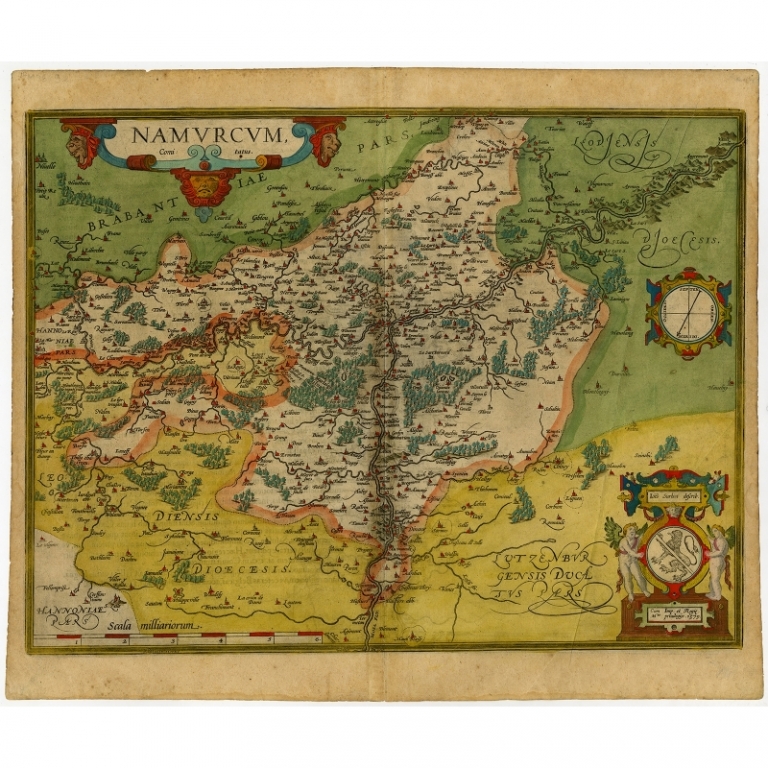FREE
WORLDWIDE
SHIPPING
No products
PCT-56805
Antique Map of the region of Namur by Ortelius (c.1610)
- Condition: Good, given age. Original middle fold, as issued. Creasing in the lower right quarter of the sheet. A printer's crease in the top right corner of the image. Margins a little browned. Two small nicks in the left margin. Dampstains in the left and right margins (just outside of image). Paper separation in the lower middle fold, backed with acid-free archival tape. General age-related toning and/or occasional minor defects from handling. Latin text on verso. Please study image carefully.
- Date: c.1610
- Overall size: 54.2 x 45.2 cm.
- Image size: 51.5 x 39 cm.
Worldwide
shipping
Description: Antique map titled 'Namurcum Comitatus' A map of the Namen/Namur region in Wallonia, Belgium. It is the capital of the province Namur and hosts the Walloon Parliament. This includes the cities Namur, Dinant and Huy, along the river Meuse (Maas). Luxemburg in the lower right corner.
From the 1608/1612 Latin edition of Ortelius' "Theatrum Orbis Terrarum". Dated 1579 in the cartouche. Ref: Van den Broecke Ort 68.1 : 1608/1612L46.
Artists and Engravers: Abraham Ortelius (1527 -1598) was a Flemish cartographer, cosmographer, geographer and publisher and a contemporary of Gerard Mercator, with whom he travelled through Italy and France. Although it is Mercator who first used the word "Atlas" as a name for a collection of maps, it is Ortelius who is remembered as the creator of the first modern atlas. Theatrum Orbis Terrarum was the first systematically collated set of maps by different map makers in a uniform format. Three Latin editions as well as a Dutch, French and German edition of Theatrum Orbis Terrarum were published by 1572 and a further 25 editions printed before Ortelius' death in 1598. Several more were subsequently printed until around 1612. Ortelius is said to have been the first person to pose the question of the continents once being a single land mass before separating into their current positions.



